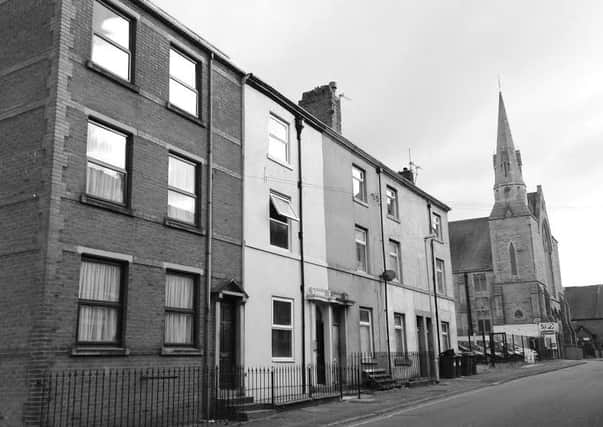Fatal blow landed in pub brawl


In the middle of the 19th century there was in Grimshaw Street a public house named the St Leger Inn.
On the third Saturday of February 1856 an assault took place at the St Leger that led to the death over a week later in the House of Recovery of a young weaver called George Atkins, aged 22.
Advertisement
Hide AdAdvertisement
Hide AdInitially, his death led to five men being charged before the magistrates at the Town Hall with assaulting Atkins after a rumpus in the domino room with furniture flying.
It became apparent at that hearing that Thomas Singleton, 41, an overlooker in a cotton mill, was the one who had struck the fatal blow.
On the following Monday an Inquest was carried out at the Town Hall, before Miles Myres the coroner.
The deceased’s mother told the gathering that she had been called to a house in Leeming Street on the Saturday night shortly after nine o’clock. Her son was sitting on a chair with blood running down his face and quite insensible, she immediately arranging for him to be helped home.
Advertisement
Hide AdAdvertisement
Hide AdA plaster was placed on his head wound and he was taken to bed. The following day he appeared to be getting worse and local surgeons Mr Noble and Mr Spencer attended him.
Mr Noble stated that he had found Atkins quite unconscious and examining him had found a deep perforation to the skull. His condition had worsened as the week went on leading to his death. He reported that a post-mortem examination had shown that a wound to the head matched exactly with the steel spike of a broken stool leg that he believed had inflicted the fatal blow.
Joseph Berry, who witnessed the disturbance, said that he was playing a game of dominoes and as it finished George Atkins came into the room and a quarrel broke out.
He stated that he saw Singleton strike the deceased on the head with a stool leg and blood squirted out from the wound. In his opinion both men were quite sober when the incident took place.
Advertisement
Hide AdAdvertisement
Hide AdPolice Sergeant Walmsley told the inquest that from information gathered he went to the house of Singleton and when he told him that his name had been mentioned with regards to the assault he made no reply.
Singleton who had quickly left the scene after the incident had being taken into custody where he remained awaiting the inquest verdict.
The coroner then summed up, particularly with regards to the distinction between manslaughter and murder. The jury then retired, and in five minutes returned with a verdict of ‘ Manslaughter against Thomas Singleton’.
He was then committed upon a coroner’s warrant to the forthcoming South Lancashire Assizes.
Advertisement
Hide AdAdvertisement
Hide AdWhen the assizes took place in early April 1856 before Mr Justice Willes, Thomas Singleton pleaded guilty.
His Lordship after looking at the depositions concluded that although the deceased met with his death by the violence of the prisoner, there did not appear to have been any intention on the part of Singleton to take away his life or do him any very great harm.
Addressing the prisoner he told him he could not absolutely pass over the offence, and consequently he must be imprisoned and kept to hard labour for two months.
Within a few years the St Leger took the name of Clarence House and became a familiar local Music Hall in late Victorian times.